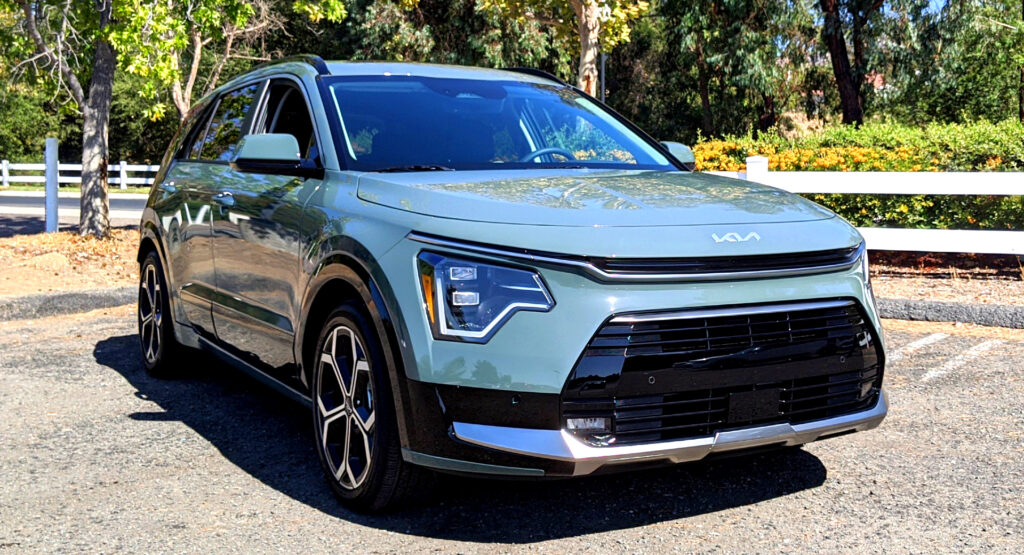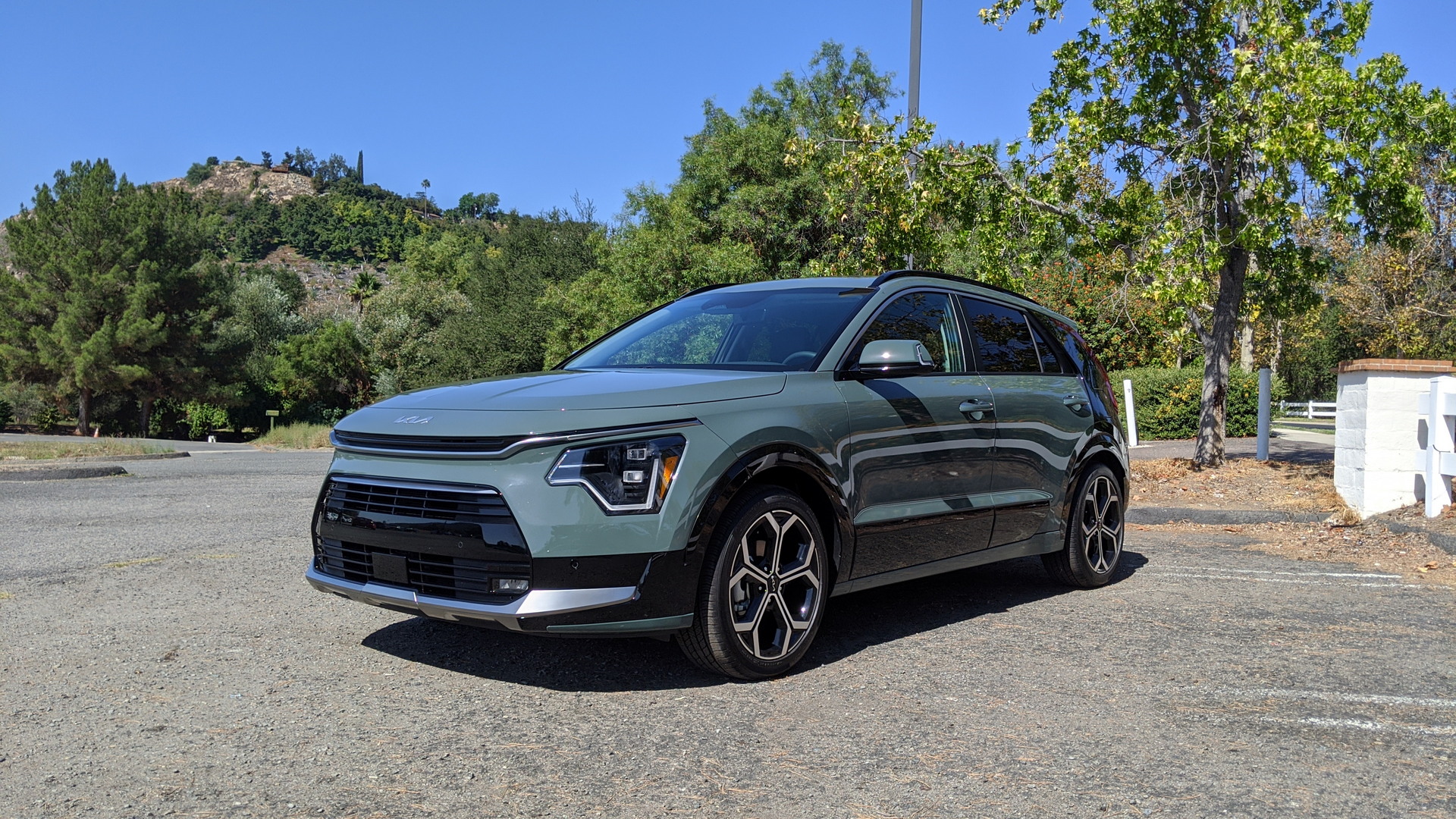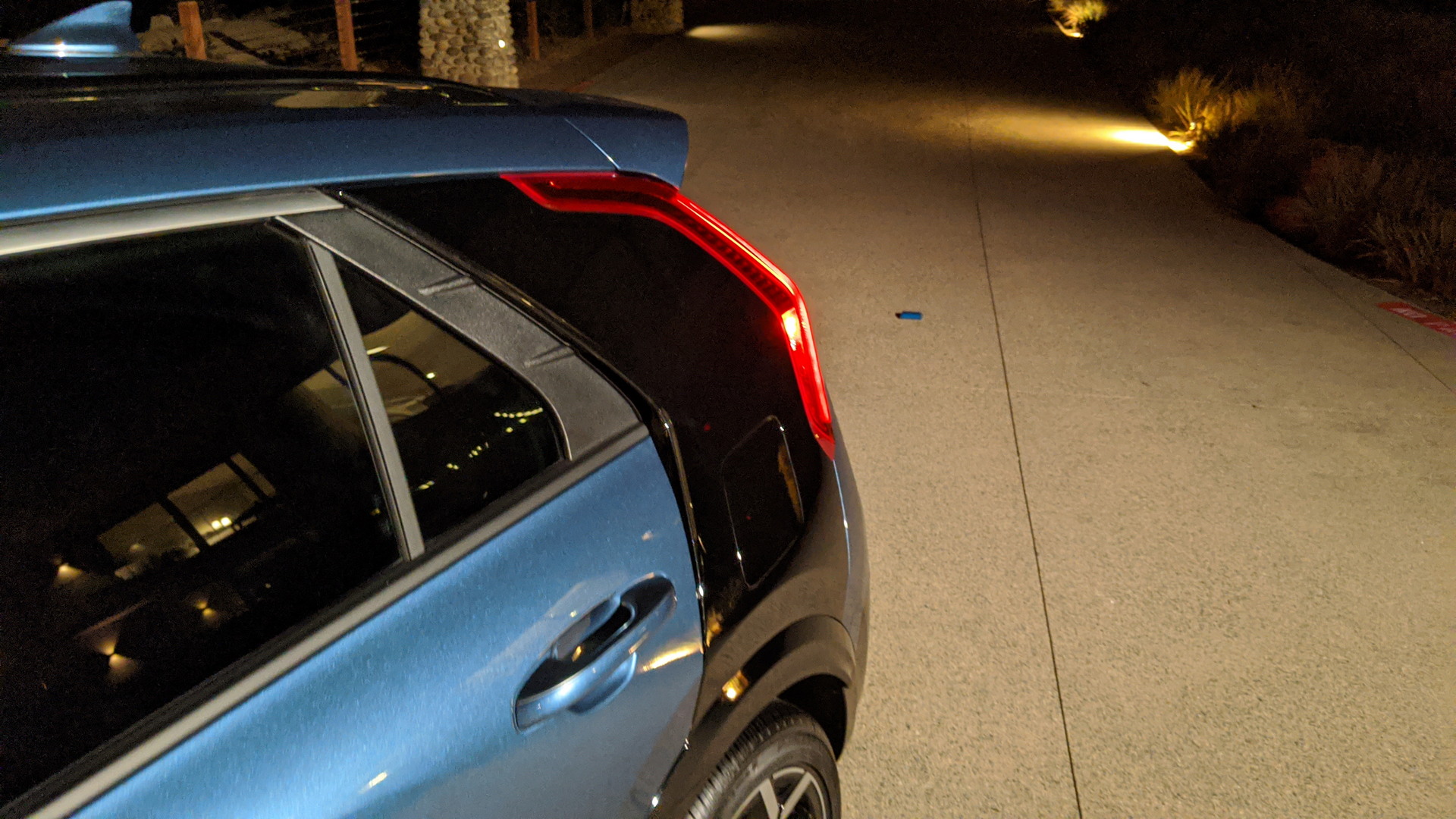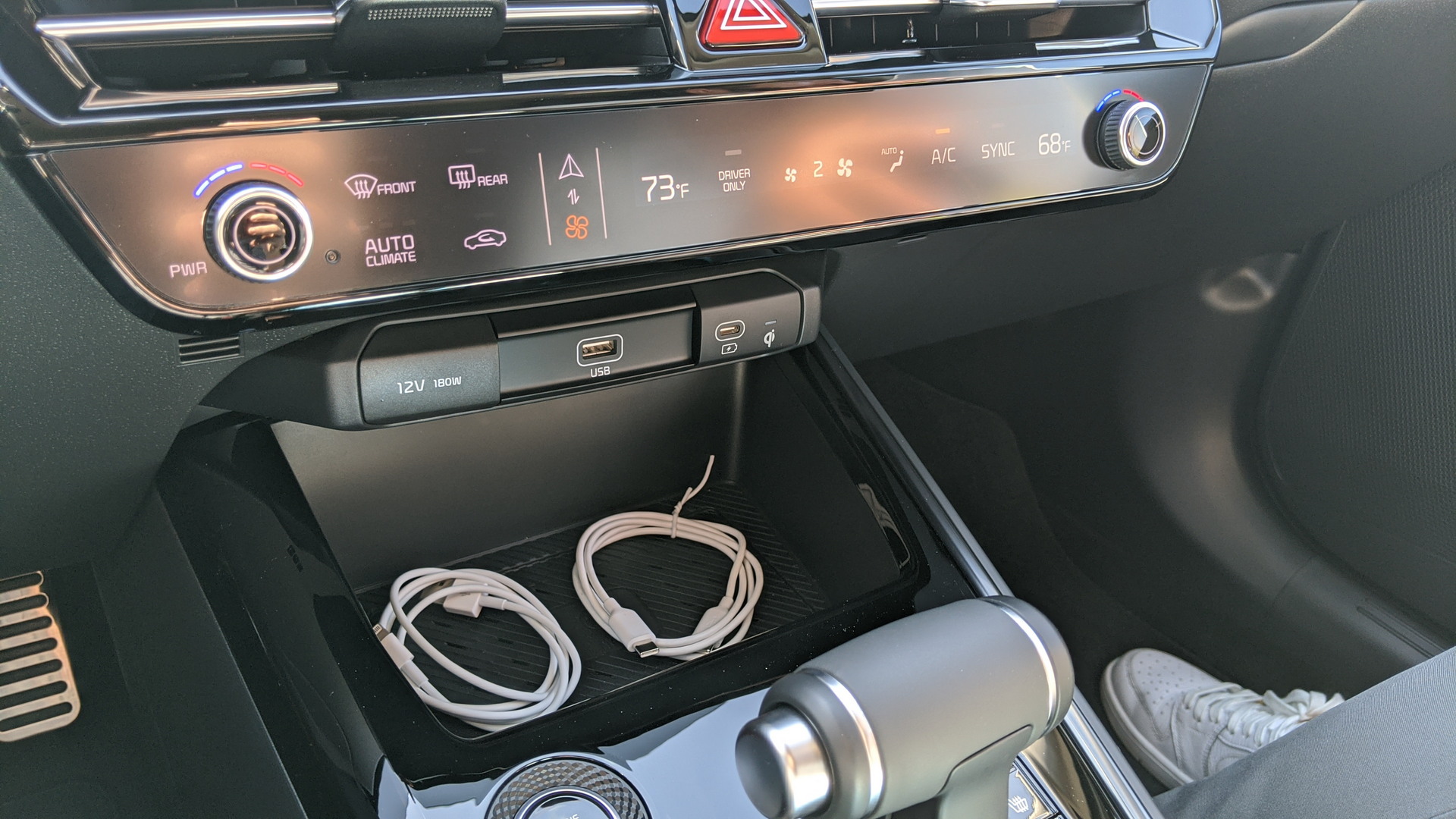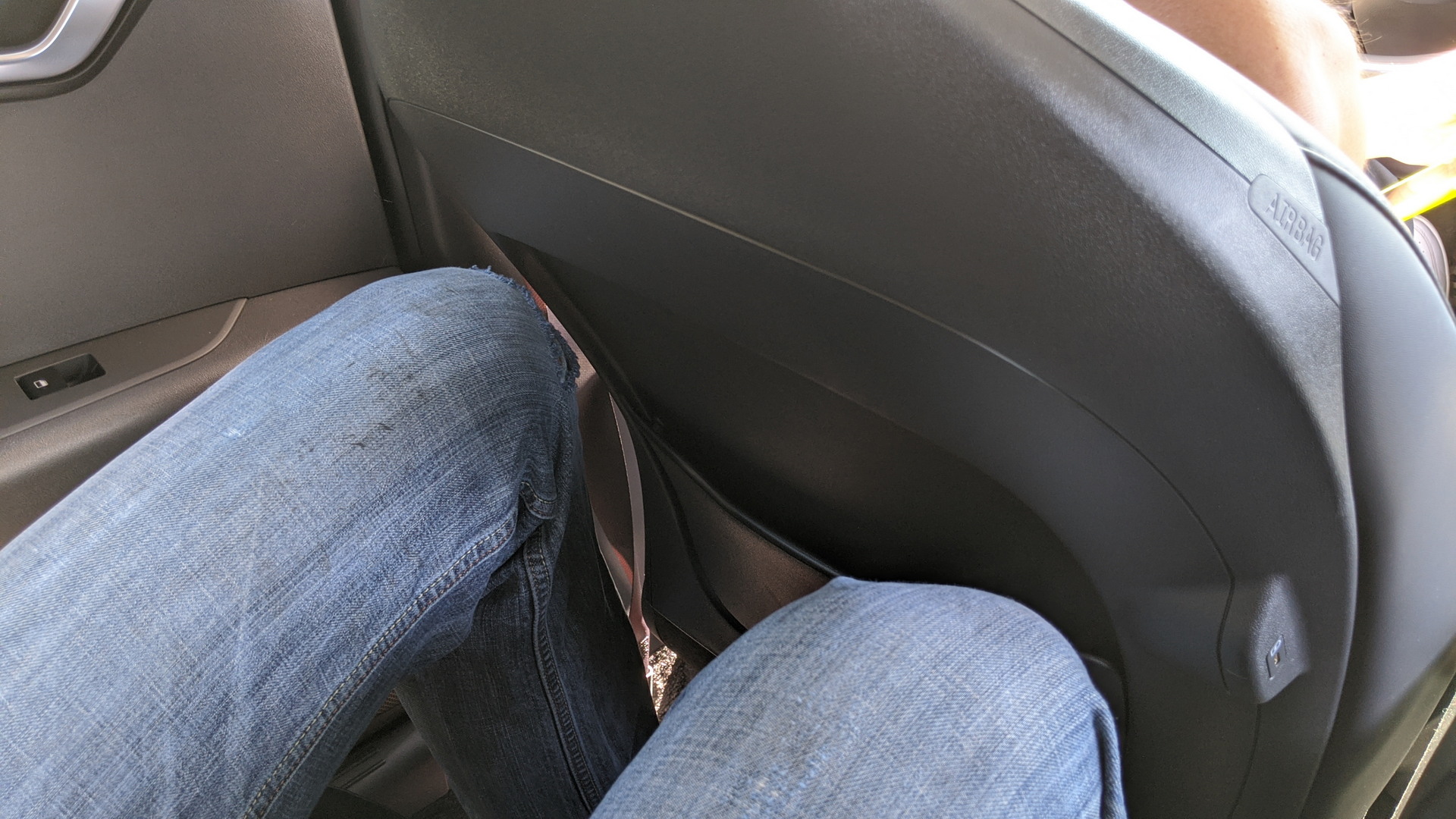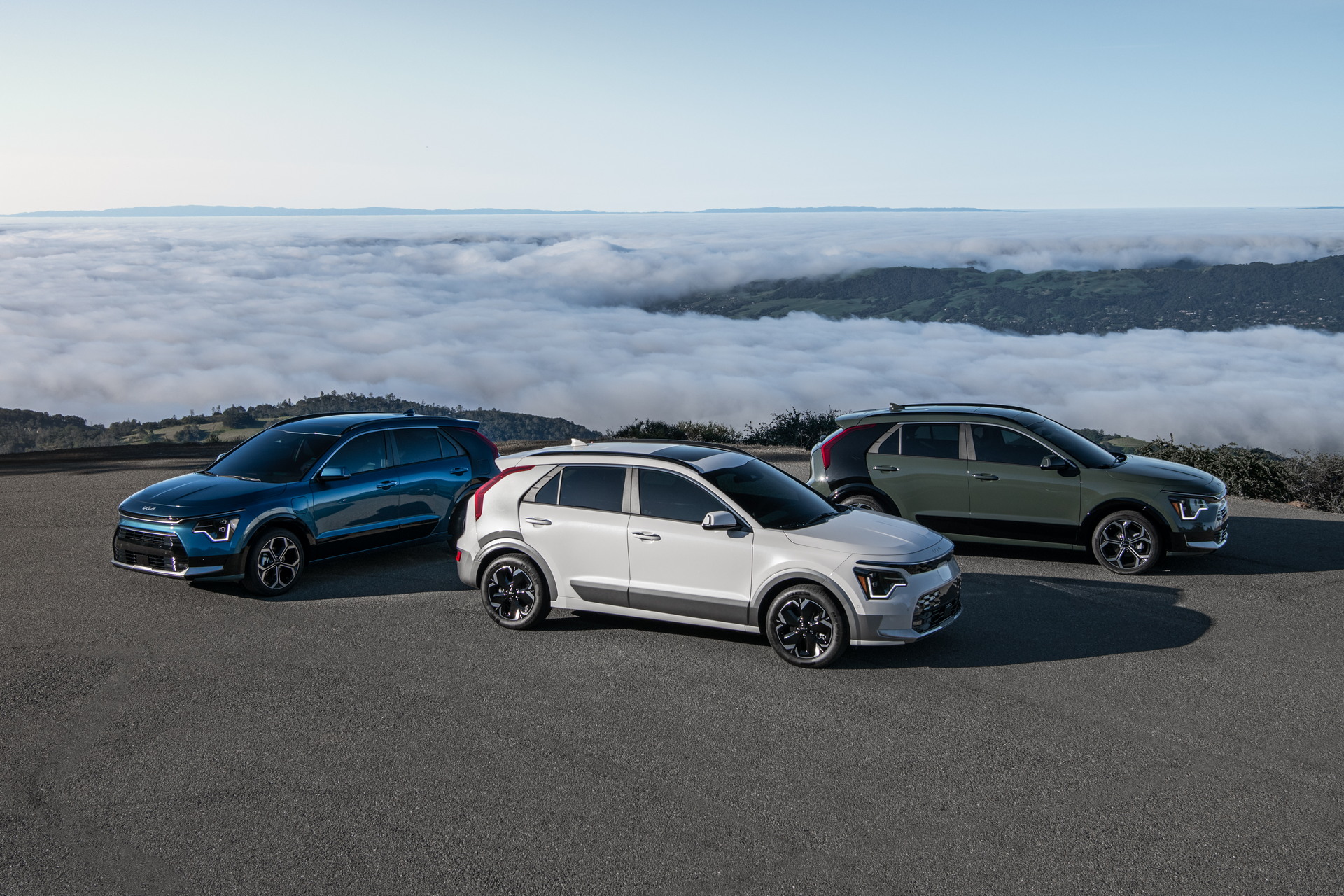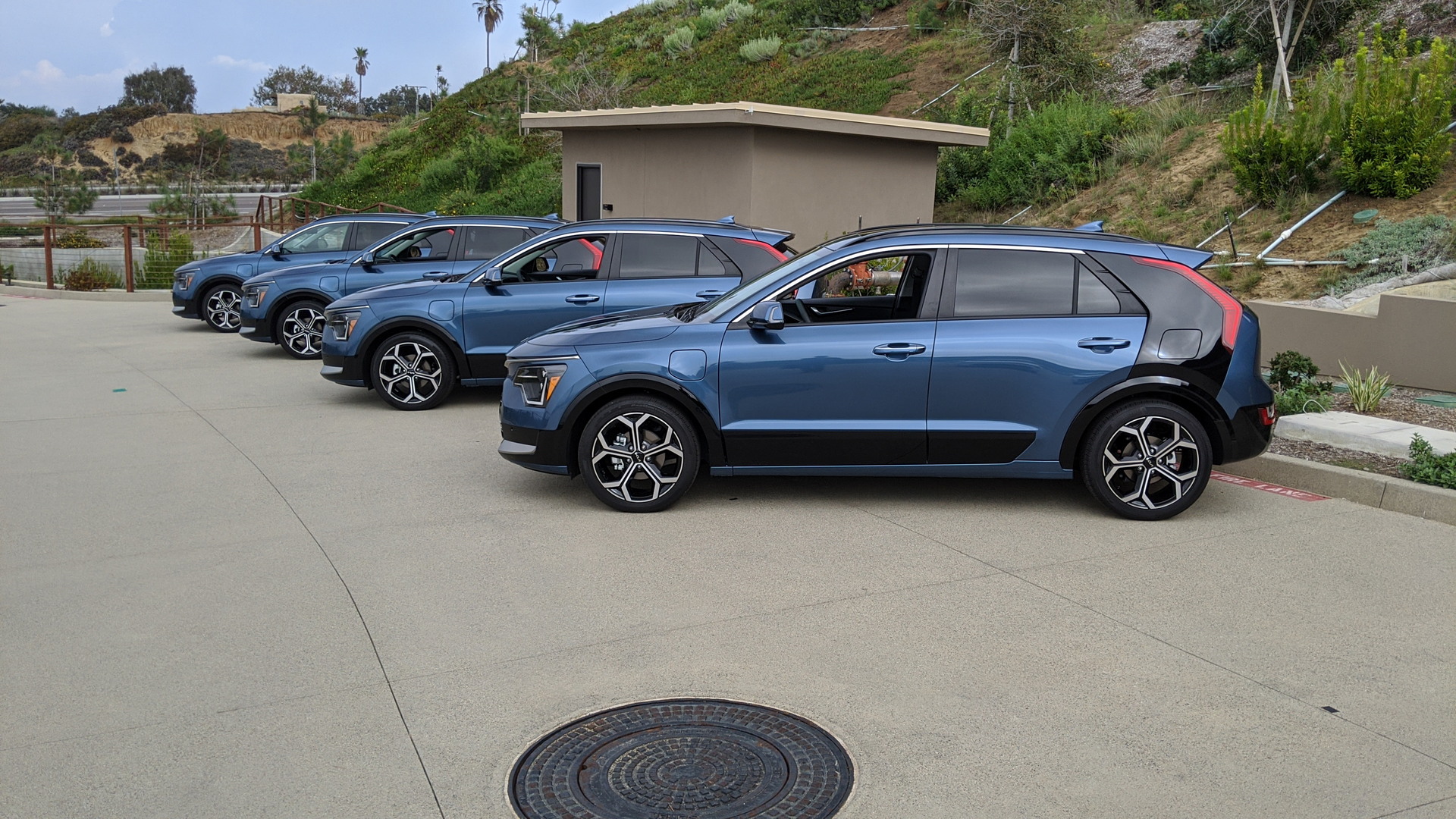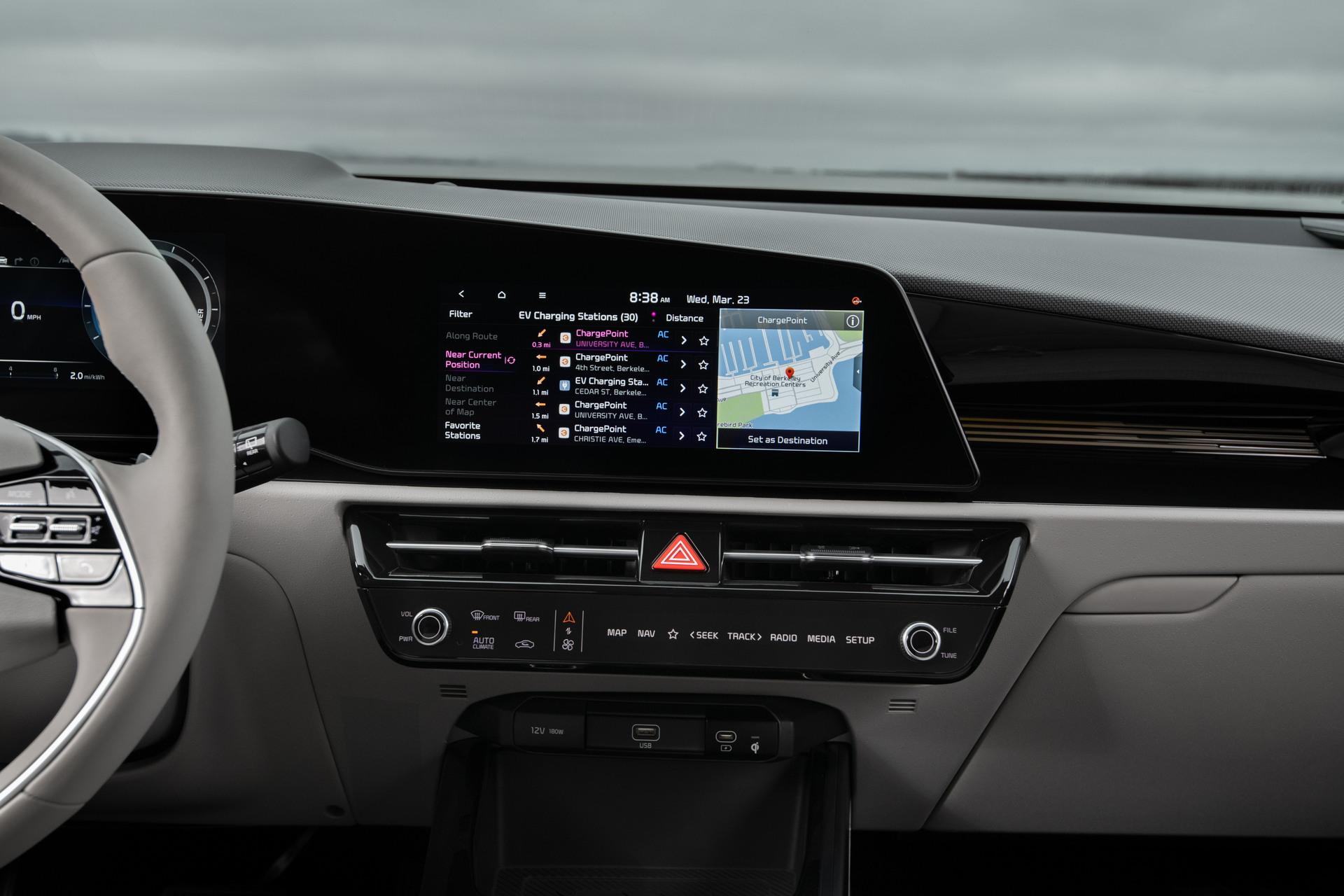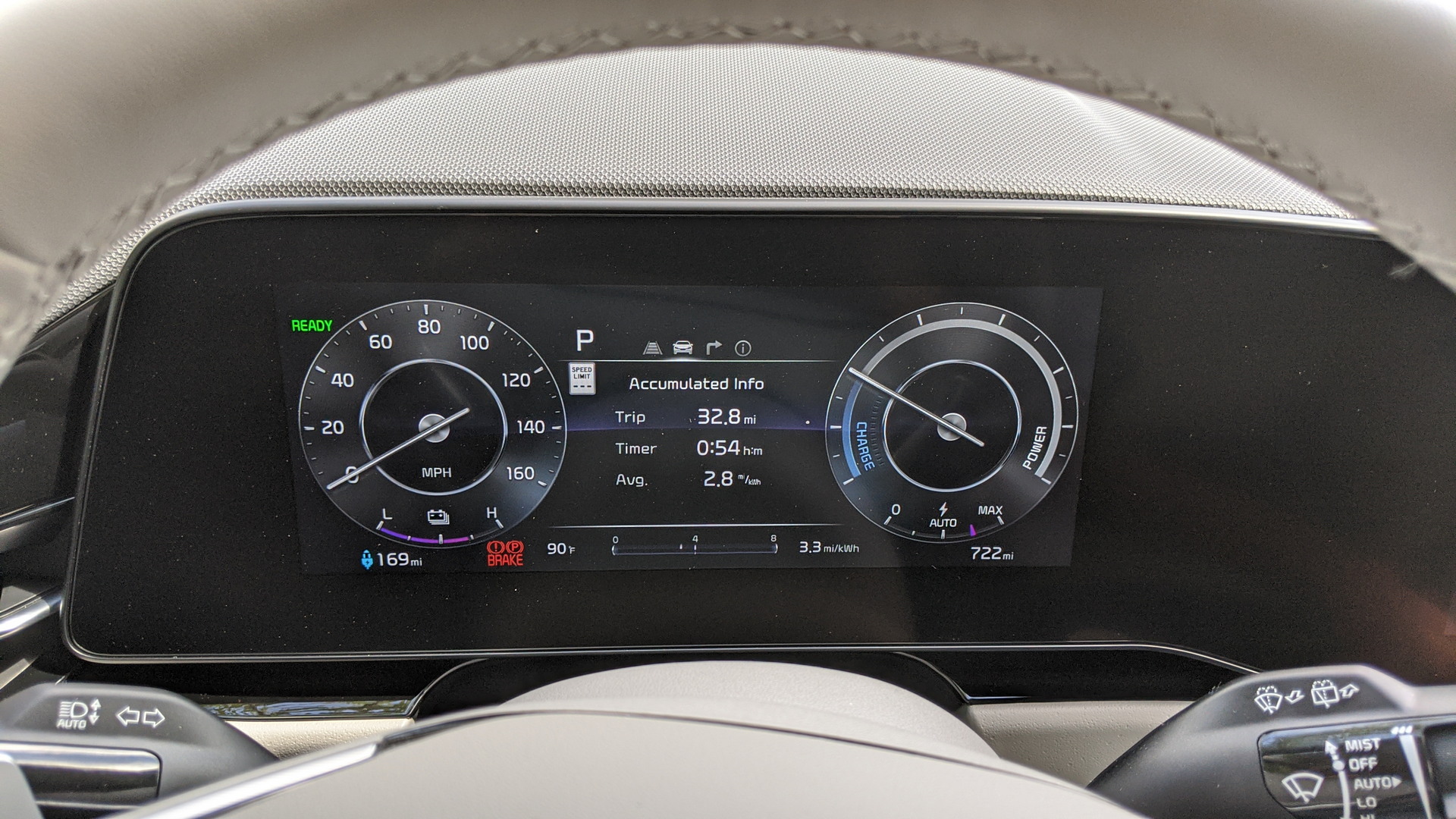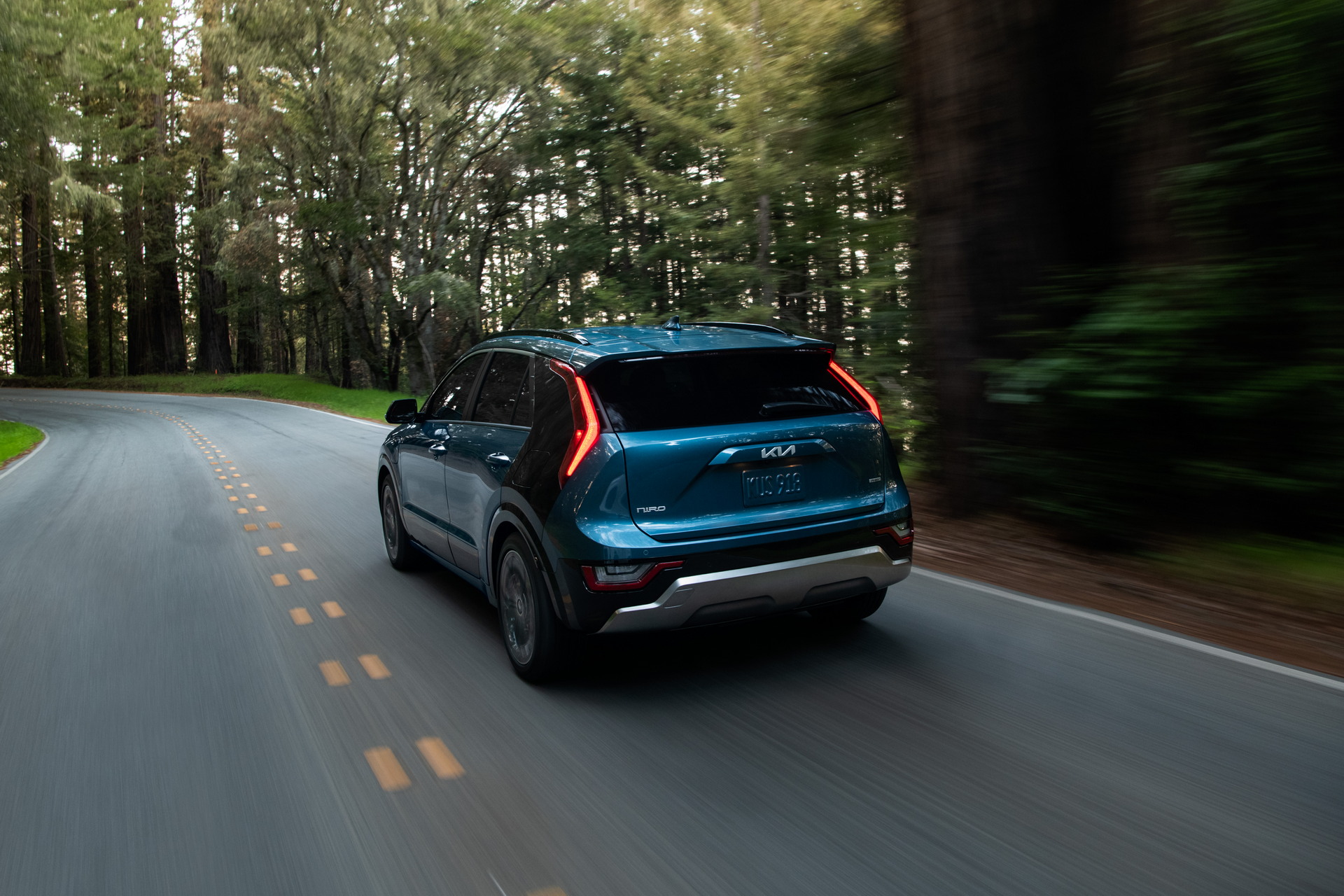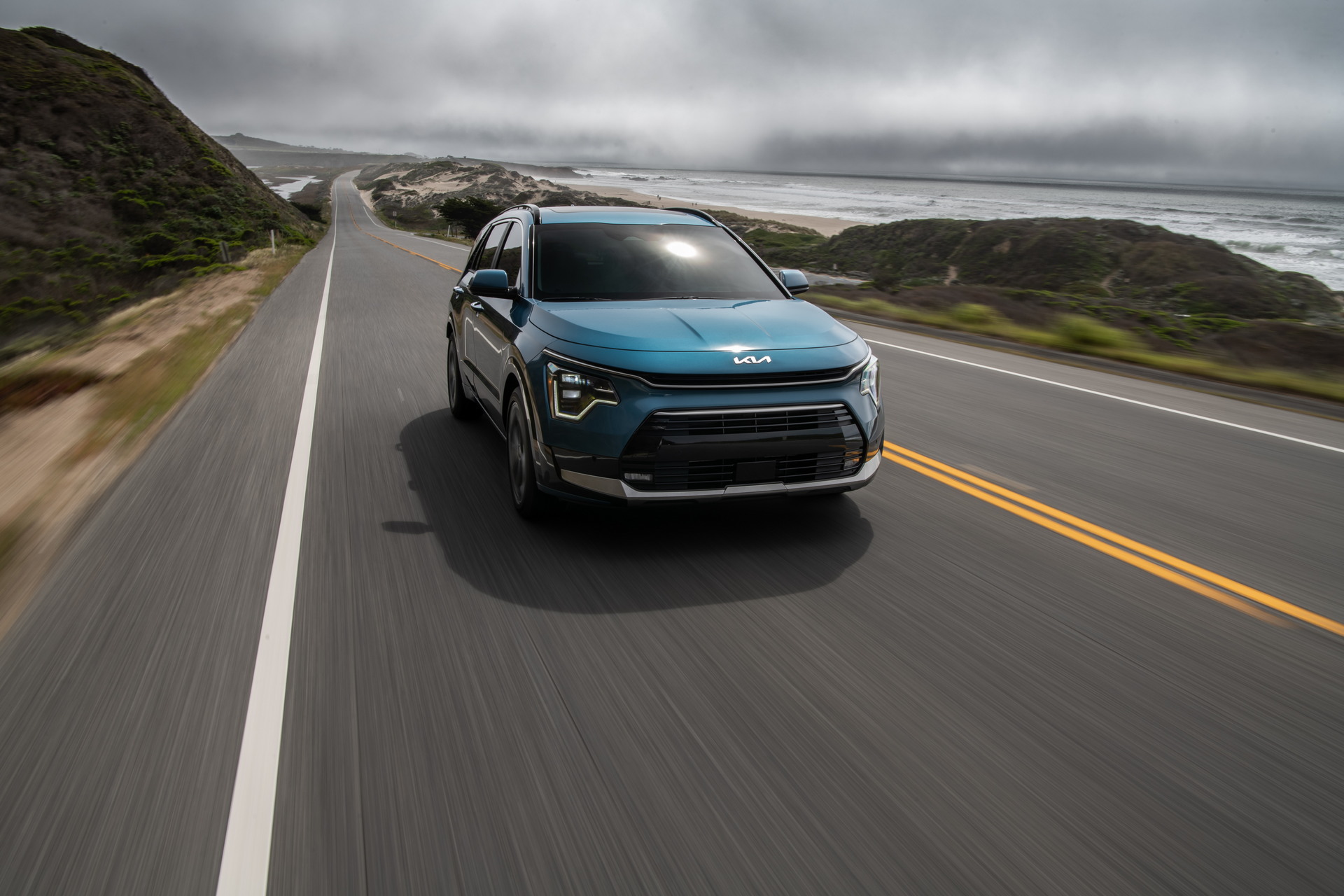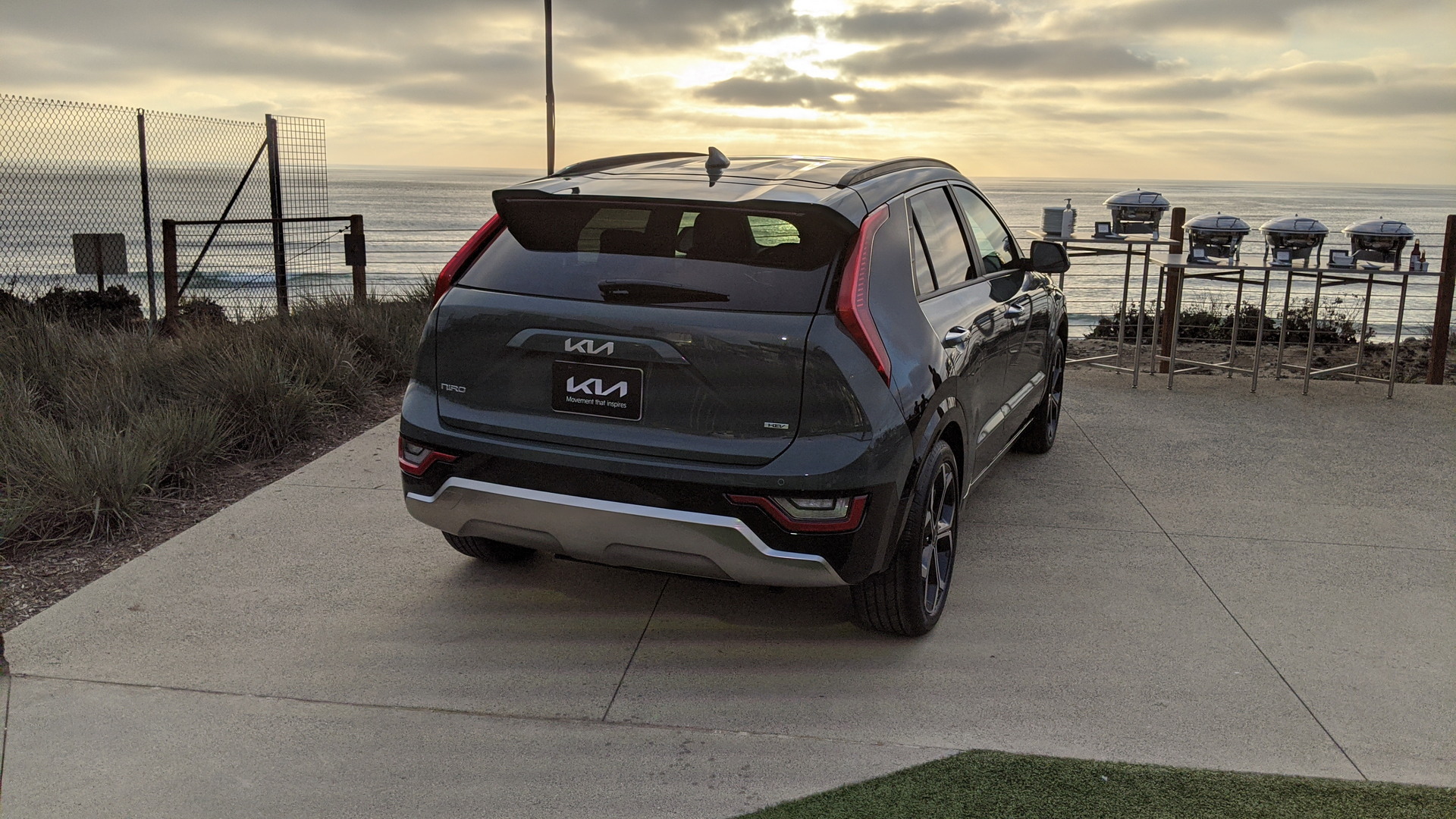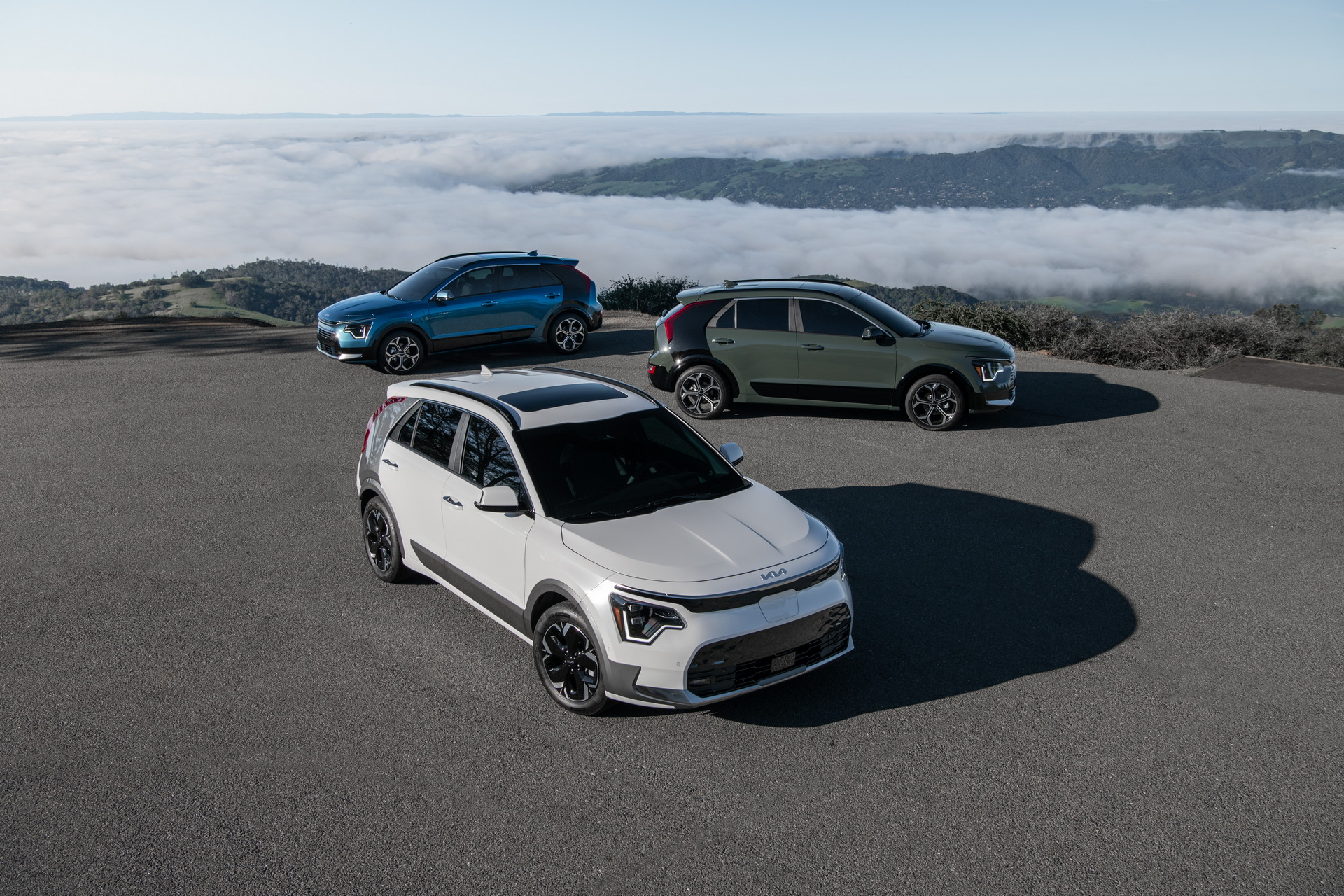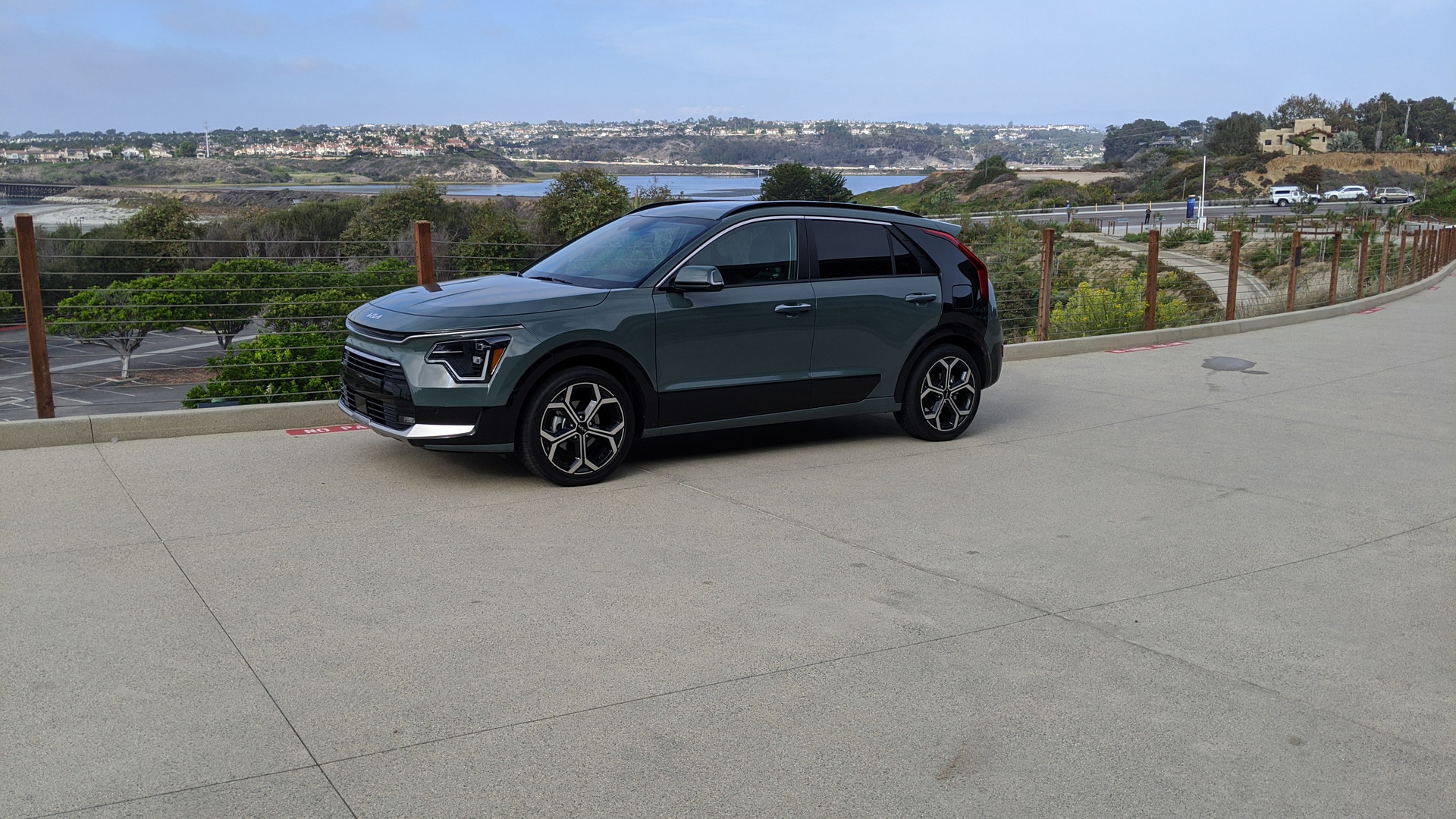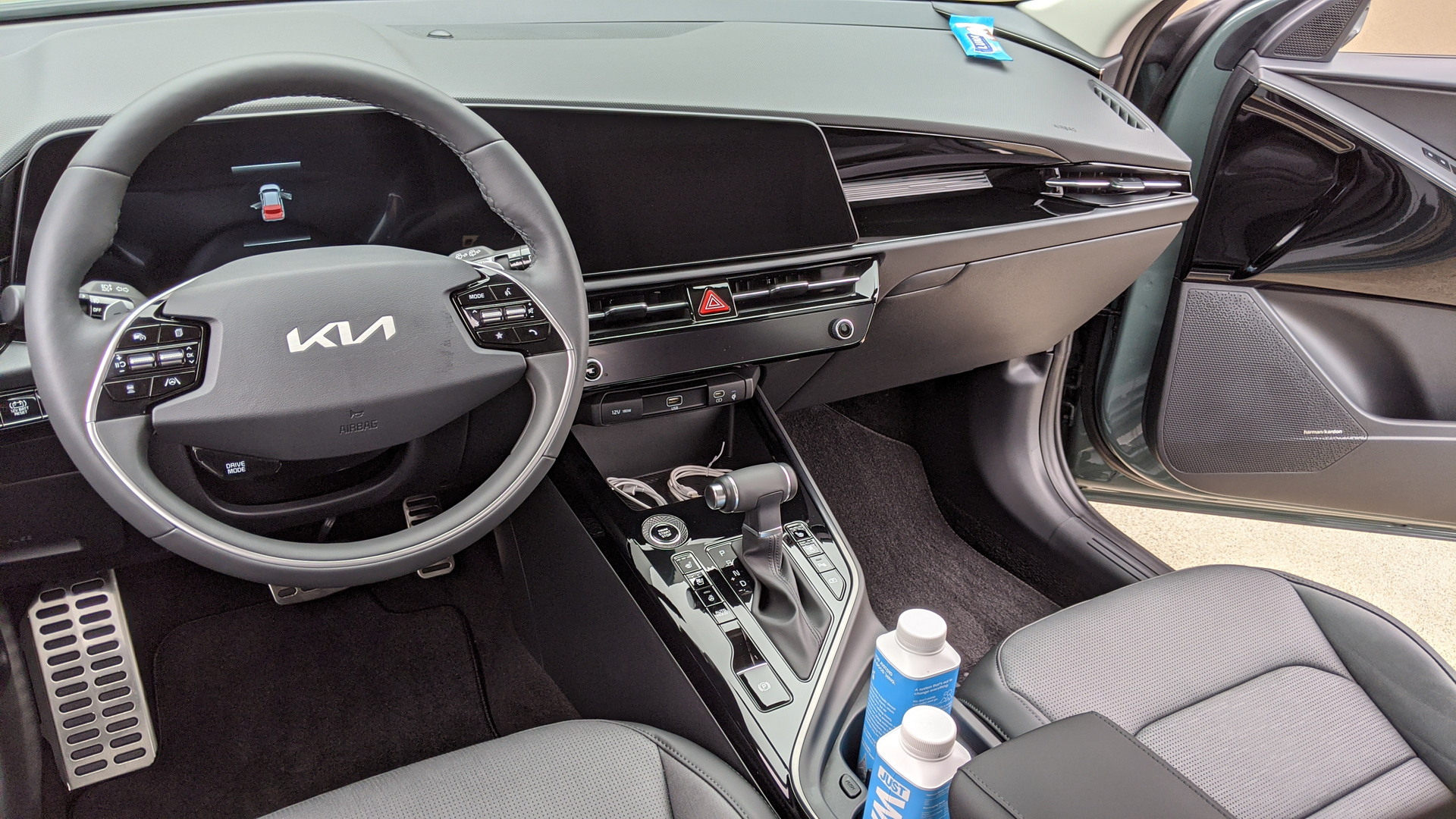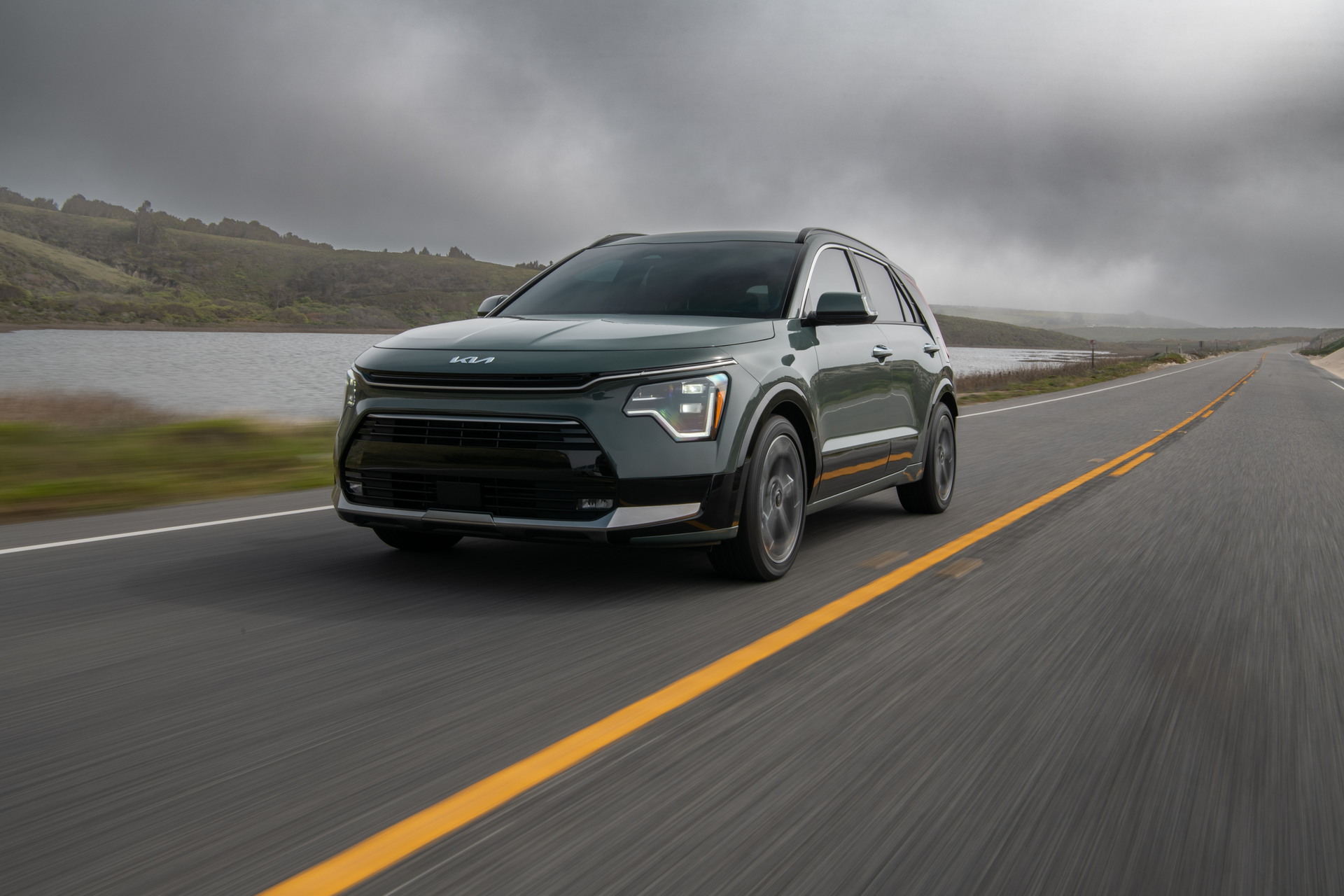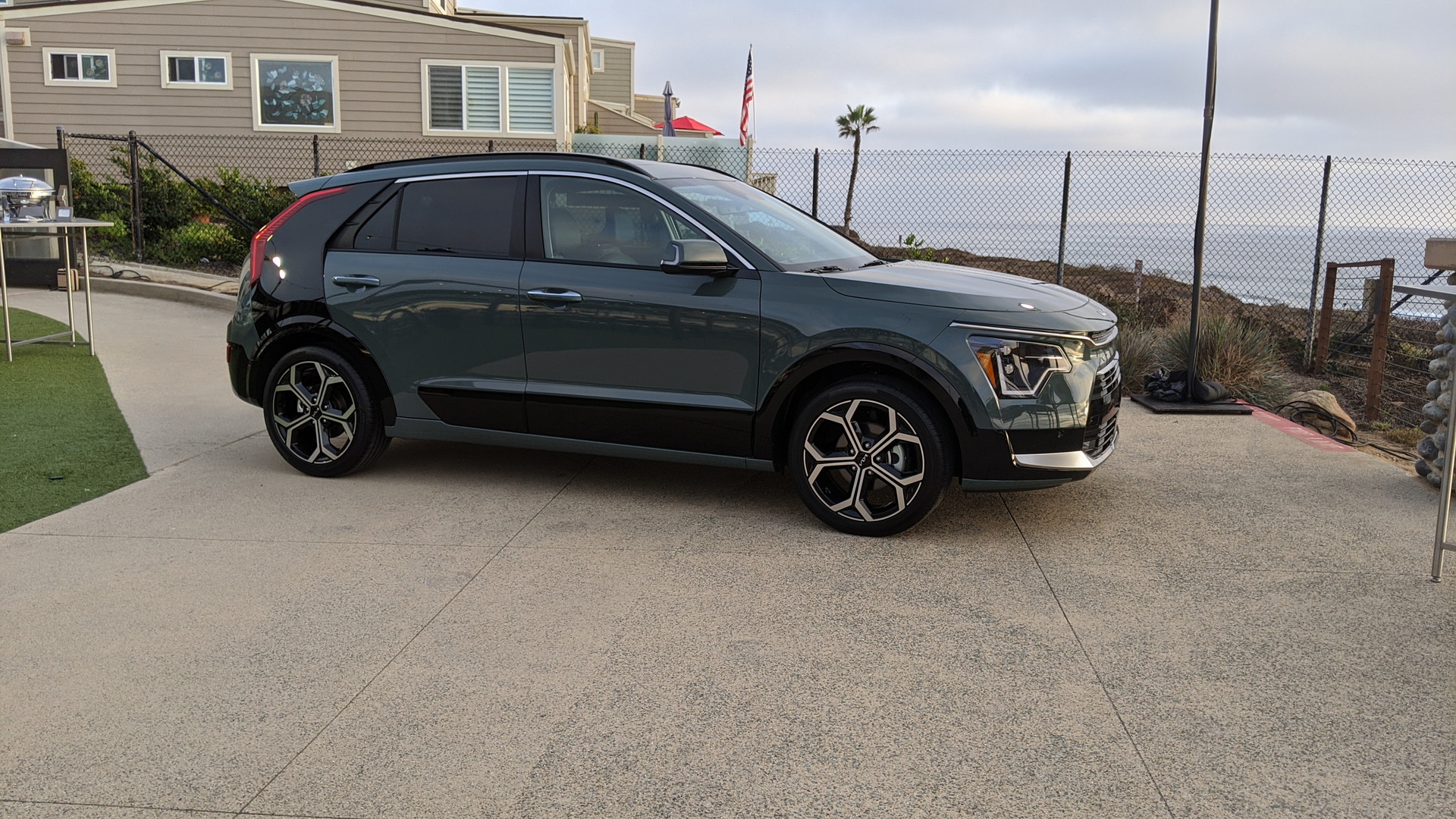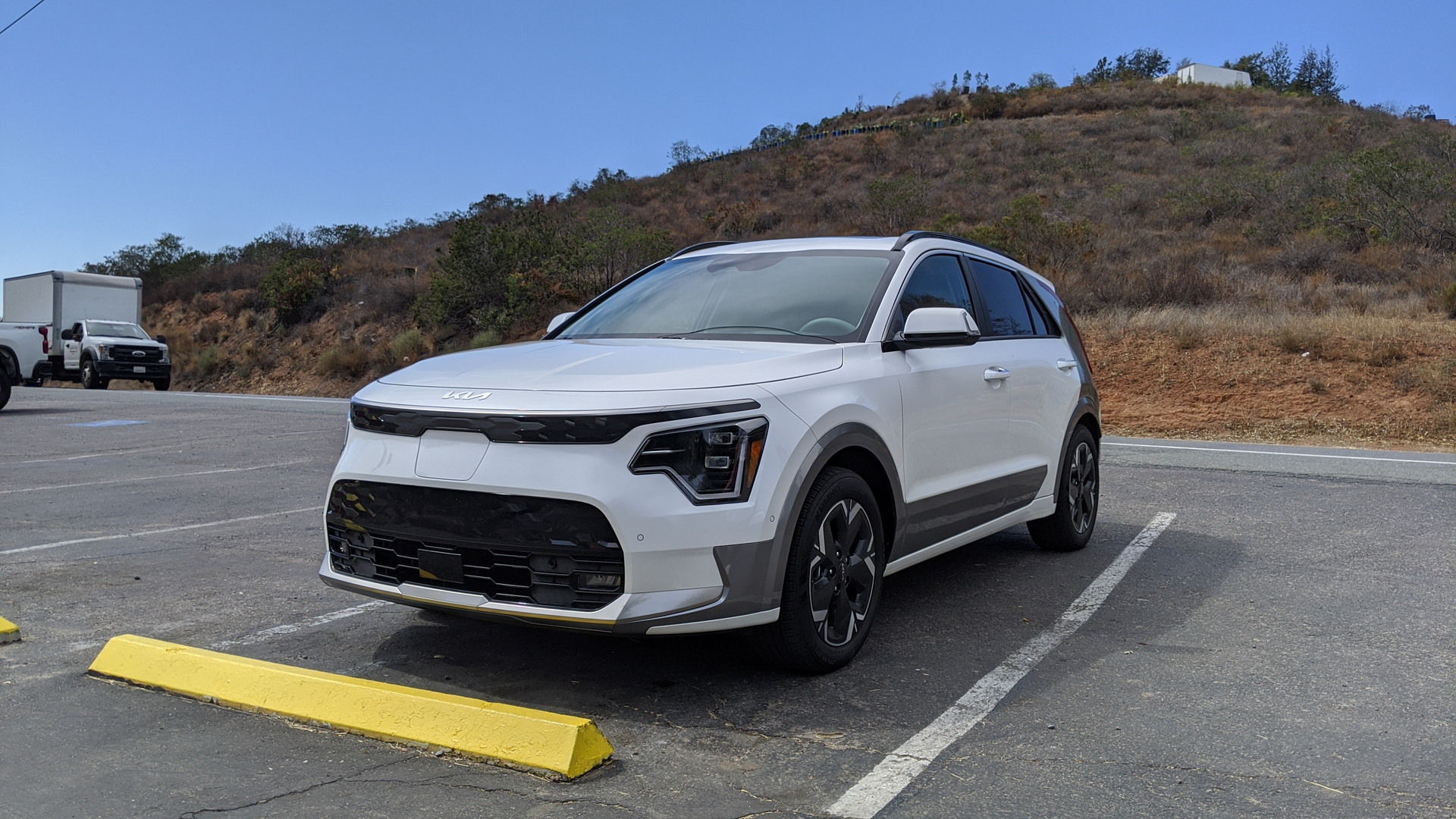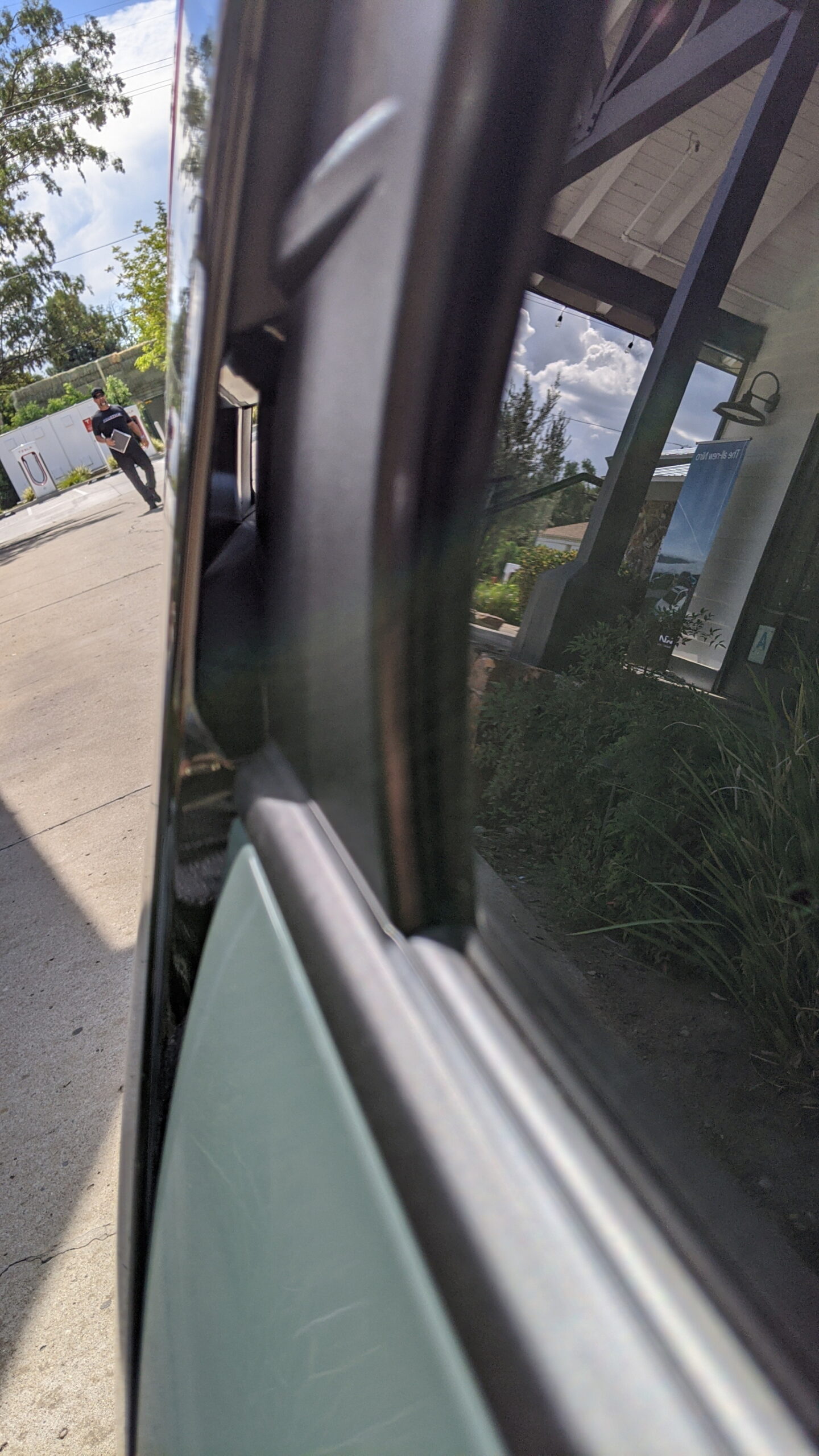The Kia Niro has grown in popularity since its release back in 2016. Even now, as its first generation is about to be supplanted by an all-new Niro, it’s had a 27 percent increase in sales. That’s no easy feat but the Niro has made a name for itself as a flexible, practical, and value-oriented crossover. Truly, the 2023 Kia Niro is going to have some big shoes to fill.
To find out if it’s getting off on the right foot we spent three days with the new Korean people mover. Now that we’ve had a chance to experience all three of the new Niros coming to America we feel confident that its improved refinement will have customers continuing to line up at Kia dealers across the nation.
Quick Facts › › ›
› Model: 2023 Kia Niro
› Starting MSRP: $27,785 Hybrid / $33,740 Plug-in Hybrid / TBA EV
› Powertrains: 1.6-L Turbo’d Hybrid / PHEV / EV l 6-Speed Automatic / Direct drive l FWD
› Hybrid Output: 139 Hp (103 kW) / 195 lb-ft (264 Nm)
› Hybrid EPA: 53 MPG City / 54 MPG Highway / 53 MPG Combined (Hybrid)
› On Sale: Hybrid – Now / PHEV & EV – Late 2022 Early 2023
Styling That Aims To Stand Out
Separating yourself in a sea of crossovers is no easy feat. The designers at Hyundai approached that problem with a few unique solutions. On its face, the Niro utilizes “Heartbeat” daytime running lights that look a little like the visualization of what a heartbeat looks like on an EKG machine. It’s striking enough that spotting a Niro in traffic behind you should be pretty simple. The two headlights sit across an updated “Tiger Nose” front end.
In addition, huge vertical tail lights adorn each upper corner of the crossover with sharp angles and hard creases. They’re actually more pronounced when viewing the vehicle from the side than they are when you’re behind it and they help to shorten the Niro to the mind’s eye by seeming to wrap the vehicle up in a tighter package than it actually takes up in real space.
Of course, we can’t avoid talking about the giant side-blade panel just ahead of those tail light housings. Every Niro available to us throughout our testing time had a different color on that blade than the main color of the body itself. That panel is a direct tie back to the Kia Habaniro Concept but don’t expect to see it so often on public roads. It also has a very small and barely functional air channel just beneath the panel.
For those who don’t want to stand out, Kia promises that most Niro models will come with a color-matched side blade. In fact, it expects that a fairly small subset of Niro customers will specifically seek out one with a side blade that stands out.
A Sleek And Modern Interior
Open the large doors and one will find that ingress is quite easy. The cabin itself features what Kia calls a Parametric design and it closely resembles that of the EV6. Most Niros will also come with a panoramic digital dashboard that incorporates two 10.25-inch LCD screens that serve as the infotainment system and the gauge cluster respectively.
Below that is the same dual-use touch-sensitive climate control/media control panel found in the EV6. We didn’t love it when we tested that car but admittedly, the system is easier to use as one becomes more familiar with it. Multiple power points exist just below the system including USB, USB-C, and a wireless charging pad.
Conventional hybrid Niros will get a traditional gear shift lever in the center console area while PHEV and EV Niro customers will use a dial to select gears. All three powertrains share the same layout otherwise with a Start/Stop button along with controls for seat heating and cooling, parking sensor deactivation, and more.
Overall, it’s a handsome cabin with materials that either meet or exceed expectations for a car in this price point. That positive impression is bolstered further by seating that’s spacious, supportive, and comfortable overall. At no point did I (a guy who’s 6’6 ft / 198cm tall) feel cramped or uncomfortable due to space. With the front seats set up where I like to drive I still had plenty of rear seat space for my knees too.
If there’s anything to knock it might be the somewhat drab door cards and the large slabs of cheaper plastic that make up large parts of them. Still, small touches like the beautifully detailed Harmon Kardon speaker grilles and the excellent switchgear more than make up for it in our eyes.
Kia also offers some 22.8 cubic-feet worth of cargo space behind those rear seats. It says that it’s now the best-in-class when it comes to cargo room in the segment. The Niro EV also has a small storage area under the front trunk but to consider it a serious frunk would be unreasonable we think. It barely fits my everyday carry bag as you can see below.
A Full Lineup Of Efficient Econoboxes
The 2023 Kia Niro will be the only car sold in America with three distinct electrified powertrains. To clarify, it’ll be available with a traditional hybrid engine, a plug-in hybrid engine, or as a fully-electric vehicle, all of which employ front-wheel drive only. What that means on paper is a dramatic difference in power, pricing, and performance metrics.
The Niro HEV will arrive with five different trim levels, LX, EX, EX Touring, SX, and SX Touring. All will share the same 1.6-liter turbocharged four-cylinder engine that develops 139 hp (103 kW) and 195 lb-ft (264 kW) of torque. Kia says that it’ll get up to 54 mpg on the highway (53 combined) which would make it the best of its class by far. It would also offer up to 588 miles of range on a single fill up.
The Niro PHEV comes in only two trims at launch, EX, and SX. Just like the HEV version, the PHEV uses the same 1.6-liter engine and a six-speed dual-clutch transmission. Thanks to the additional power from the 11.1 kWh battery, the PHEV develops 180 hp (134 kW) and can go up to 33 miles (53 km) on battery power alone. That’s seven more miles (11 km) than the outgoing Niro PHEV. According to Kia it gets 108 MPGe.
Read More: We’re Driving The 2023 Kia Niro: What Do You Want To Know About It?
Finally, the Niro EV develops 201 hp (149 kW) and 188 lb-ft (254 Nm) of torque. Powering that motor is a 64.8 kWh battery pack with a maximum charging speed of 85 kW. As a unit, the Niro EV has a 253-mile (407 km) driving range and an optional head pump for those in colder climates.
Pricing has yet to be announced for the Niro EV as of this writing. Those who go for the EV will get 500 kWh worth of free charging at Electrify America stations to sweeten the deal though. It’s also worth noting that for the time being, the Niro EV doesn’t qualify for a federal tax credit. For a detailed breakdown of pricing for the Niro HEV, which starts at $27,785, or $1,800 more than its predecessor, see this article. As for the Niro Plug-in Hybrid, it is offered in two trims, the EX from $33,740, and the SX Touring from $39,490, with neither price including a $1,295 destination fee.
Technology For The Masses
Every Niro regardless of powertrain or trim level is going to come chock full of technology. From a safety standpoint, its advanced driver assistance systems include forward collision mitigation, blind-spot warning, blind-spot avoidance assist, lane-keep assist, safe exit warning, driver attention warning, and high-beam assist.
Keep in mind too that every model aside from the base Niro HEV LX trim will also get stop-and-go adaptive cruise control, forward collision avoidance assist, and rear parking sensors. Navigation-based smart cruise control and highway driving assist technologies are both optional across the HEV range while the former is standard on PHEV models. Niro EVs get just about every safety technology as standard.
They also have a new optional Highway Driving Assist II package that includes automatic lane-changing capability and machine learning software that’s said to learn your driving style and mimic it over time.
On top of that important equipment, the Niro’s pair of 10.25-inch screens in the dash offer an above-average user experience. Graphically, the interface is easy to see and the layout is logical and easy to navigate. It also features a number of useful tools like quiet mode, deeper climate controls, and infographics on how the drivetrain is performing.
We also really like how the system gives users a very clear picture of how much range they have remaining. For example, in the PHEV Niro, that info includes the available electric range and gasoline range separately as well as combined. It’ll even show you charging stations without having to search for them.
Our only real gripe is that the gauge cluster itself isn’t as configurable as we’d like. Each powertrain has its own unique display which is nice but we’d love to see more freedom to change up the graphics.
How Does This New Niro Drive?
There are a few things that stand out as identical or close to that across every type of Niro. Most notably it’s that this is a very quiet and very comfortable riding car. Kia’s done a great job of insulating its Niro passengers from the outside world through great sound insulation and an impressive suspension. Even when pushing the combustion motor to its highest RPMs the Niro isn’t buzzy or annoying.
Additionally, all three Niro variants feature fairly communicative steering and linear acceleration through the go pedal. Conversely, the brake pedal might benefit from a little re-tuning. To our feet, it required a lot more engagement than expected when it came to stopping the vehicle completely. In moving highway traffic that translated to smooth and subtle speed adjustments but everywhere else it was somewhat surprising just how far we had to press to get the Niro to stop.
In addition, the Niro EV wouldn’t come to a complete stop through any other means than the use of the brake pedal. Despite numerous attempts at using the left paddle to engage the most aggressive regenerative braking the car continued to gently roll until we hit the brake pedal. That brings us to the differences between these three powertrains.
Despite the seeming lack of one-pedal driving ability, the EV is still the most fun to pilot because it’s downright quick. That skateboard-style battery pack also contributes to a low center of gravity and the best cornering ability of the bunch too. It’s enticing enough that we hope Kia will make a Niro EV N at some point in the future.
The PHEV Niro would be our second choice if driving dynamics were all that mattered. It’s much quicker than the traditional hybrid as it sports 41 horsepower (30 kW) more and like the rest of the family, retains excellent road-holding skills without major body roll or understeer. We also love the fact that you can force it to utilize either the battery alone, the internal combustion engine alone, or both.
Finally, the everyday hybrid Niro will serve best as a somewhat plain Jane everyday commuter car. It’s not very quick but it’s comfortable, and quiet, and who doesn’t love getting up to 54 mpg (4.4 l/100km)?
The Niro Has Many Challengers
Three different electrified drivetrains set the Niro apart from its challengers but it also opens it up to more rivals overall. The traditional hybrid will go up against cars like the Toyota Corolla Cross, the RAV4, and the Honda CR-V. We expect the 2023 Corolla Cross Hybrid to start around the same $27,000 price tag but the EPA says that at best it’ll only get up to 33 mpg (7.1 l/100km) on the highway.
The 2022 RAV4 hybrid starts from just under $30,000 and struggles to come anywhere near the Niro hybrid in terms of fuel economy. Of course, both the Corolla Cross and RAV4 have benefits like additional engine choices or standard AWD. The 2023 Honda CR-V Hybrid starts at $32,450 and offers optional AWD but early reports suggest that it’s pretty loud, not all that great to drive, and gets at best 34 mpg (6.9 l/100km) on the highway.
The plug-in hybrid version of the Niro also goes up against a plug-in version of the RAV4 that is priced from $40,300. It has a lot going for it including AWD and excellent power. On top of that, the Niro will need to steal sales from both the Prius PHEV and the Ford Escape PHEV.
Finally, the Niro EV will be challenged by the Bolt EUV and the Volkswagen ID.4. Again, without knowing pricing info, it’s tough to be sure exactly where the Niro EV will fall but we’re betting it’ll be in between those two challengers. The 2022 Niro EV started at $40,385 so we expect the 2023 to be a bit higher. Of course, that means that the Bolt EUV (from $27,200) will cost thousands less but the Kia will offer more features. The Volkswagen (priced from $37,495) will likely cost about the same if not very slightly less than the Kia. At the same time we’d happily pay a small premium to avoid the ID.4s frustrating infotainment system.
Final Thoughts
Pricing is ultimately going to determine just how good of a deal the EV version of the Niro will be, but there’s an overarching theme of all three powertrains. The Niro feels like a very well-made and thoughtfully-designed rival to every other car in its segment. Offering three powertrains also provides buyers with the freedom to choose the car that suits their lifestyle best.
If it were our money, the PHEV is probably too far into the Goldilocks zone to avoid. No, it’s not as fun to drive as the EV, but the base $33,740 EX Plug-in hybrid variant is likely to be thousands cheaper too (it remains to be seen what price difference the loaded $39,490 SX Touring Plug-in hybrid has with the all-electric model). It also has the benefit of being able to switch from fully electric to gas-powered and back. That would eliminate most peoples’ need to stop at the gas station during most everyday commutes.




